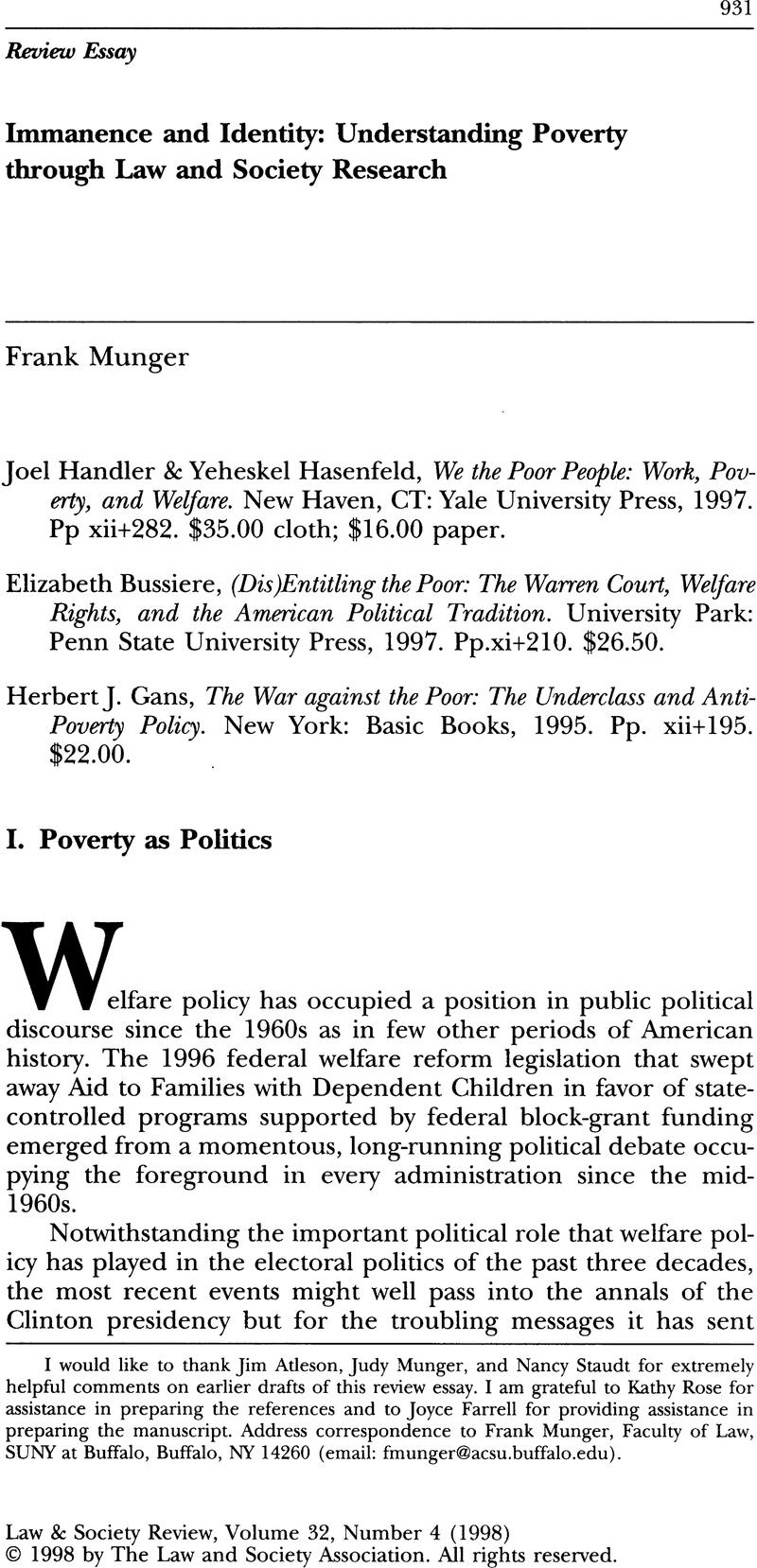Crossref Citations
This article has been cited by the following publications. This list is generated based on data provided by Crossref.
Silbey, S.S.
2001.
International Encyclopedia of the Social & Behavioral Sciences.
p.
8623.
Brockman, Joan
2003.
The Impact of Institutional Structures and Power on Law and Society: Is It Time for Reawakening?.
Law & Society Review,
Vol. 37,
Issue. 2,
p.
283.
Lens, Vicki
and
Vorsanger, Susan Elizabeth
2005.
Complaining after Claiming: Fair Hearings after Welfare Reform.
Social Service Review,
Vol. 79,
Issue. 3,
p.
430.
Lens, Vicki
2009.
Confronting Government After Welfare Reform: Moralists, Reformers, and Narratives of (Ir)responsibility at Administrative Fair Hearings.
Law & Society Review,
Vol. 43,
Issue. 3,
p.
563.
Mushaben, Joyce Marie
2010.
Lieber gleich berechtigt als später! Comparing Women’s Rights in the United States and Germany.
Zeitschrift für Vergleichende Politikwissenschaft,
Vol. 4,
Issue. 2,
p.
331.
Lens, Vicki
2011.
Contesting the Bureaucracy.
Social & Legal Studies,
Vol. 20,
Issue. 4,
p.
421.
Silbey, Susan S.
2015.
International Encyclopedia of the Social & Behavioral Sciences.
p.
726.
Jørgensen, Stine
2024.
Social assistance and the end of poverty.
European Journal of Social Security,
Vol. 26,
Issue. 1,
p.
27.



